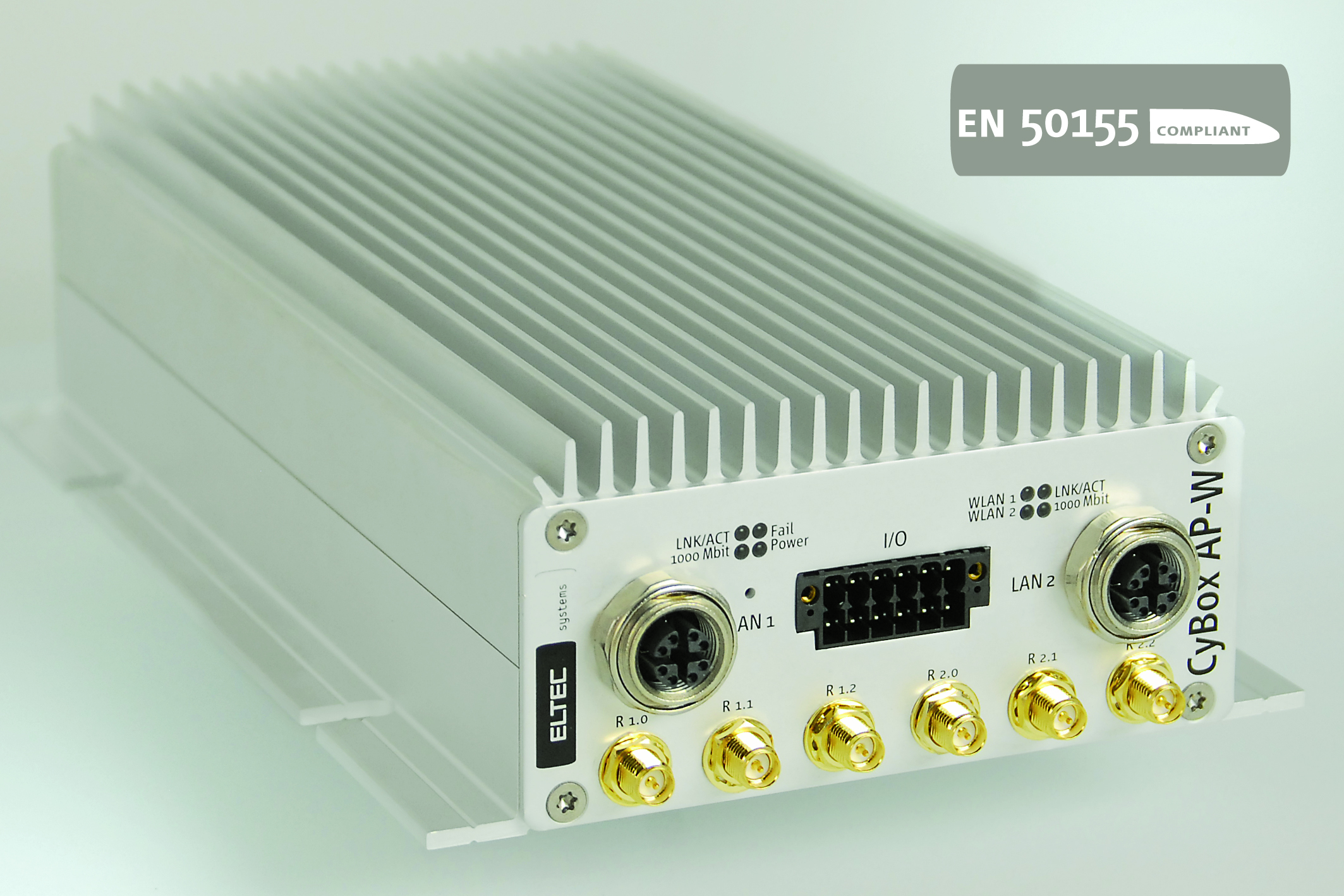
ELTEC Elektronik sturdy wireless access point Cybox AP-W enables the automated configuration of networks during master runner coupling maneuvers

27.08.2014
Many railway systems are currently equipping their trains with WLAN solutions, primarily with the aim of giving passengers Internet access. While access points grant network access, the devices are now also being used to automatically configure a network (Ethernet backbone) across all parts of the train or to make external connections possible. A clear WLAN network coupling solution makes it possible to automatically parallel switch the networks from different parts of the train; for instance, when railway cars dock or when two trains are connected with each other. ELTEC's sturdy CyBox AP-W access points allow several mobile WLAN-capable devices in a passenger train, bus or underground railway to communicate with the Internet or to access local data, such as time table information, videos, etc. It is also possible to utilize the CyBox AP-W in conjunction with sophisticated logging and security algorithms to automatically connect trains with each other or to configure a consistent train network.
The aim of wireless train-network coupling in long distance trains and regional transportation systems, including above and underground trains is to automatically establish a clear, pair-by-pair link between the opposing ends of two different railway cars. One of the key challenges is to prevent access points in the immediate proximity that are of the same design and have identical configurations, such as railway cars on the adjacent track, are inadvertently interlinked with each other.
ICCP (Inter Carriage Connection Protocol), a logging system developed by ELTEC, is a bridging algorithm for the automatic establishment of a WLAN backbone in trains. This algorithm is archived in the WLAN access point firmware (CyBox AP-W). These wireless backbones can be used in existing applications that do not allow the insertion of Ethernet cables for the coupling of the railway cars or make such cable junctions very difficult.
The main characteristics of the ICCP algorithm are:
Another key feature of CyBox AP-WP and its firmware is the client isolation, which comprises the entire backbone. This ensures that WLAN clients can only reach the content server but not other clients. The secure separation of content and administrative information is a must to prevent any vulnerability of these secured channels to attacks. To achieve this, the access point supports the utilization of Virtual Local Area Networks (VLANs), even if the ICCP is being used. ELTEC offers potential customers a demo-implementation that uses VLANs for ICCP communications.
WLAN access point CyBox AP-W
The CyBox AP-W is a wireless access point that was developed specifically for use in the rough environmental conditions inside of railway cars and locomotives; but also in automotive and industrial applications.
The power supply option the company chose for the CyBox AP-W is highly flexible. One option is to connect it to a local 24 to 110 V DC input. For alternative power sources, the CyBox AP-W is equipped with a PoE input (in compliance with IEEE802.3af), which makes it Class 3 capable.
Weighing only approximately 1 kg, the installation dimensions of the CyBox AP-W are also very compact (105 mm x 54.12 mm x 194 mm). Its maximum rated power is 12 W. The number of antennae is limited to 6, which are connected via SMA plugs. The sturdy IP30-compliant aluminum housing makes it possible to operate the unit without a fan at temperature ranges of -40 °C to +70 °C (EN 50155, Class TX). The device also boasts a high level of shock and vibration resistance pursuant to the commonly applicable DIN, EN and IEC industry standards.
The CyBox AP-W is EN 50155 (Railway Standard) approved.
Daniela Höhn
+49 6131 918 100
news@eltec.com